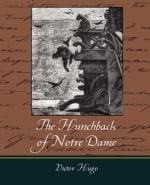|
This section contains 645 words (approx. 3 pages at 300 words per page) |

|
Paradox and Irony in "The Hunchback of Notre Dame"
Summary: This essay is an analysis on "The Hunchback of Notre Dame" by Victor Hugo. Hugo inserts irony into each character to provoke emotion in the reader, and this essay examines that as a tool.
Writing good literature is a creative art and, with any creative effort, good tools are absolutely necessary. Figurative or literal, effective use of tools shape a piece to its beauty. Victor Hugo uses many tools in The Hunchback of Notre Dame, but chief among these is his use of paradox and irony to reveal the inconsistencies of his major characters. Paradox and irony are writing tools which express contradictions, revealing meanings that are opposite to their literal meaning. They require the ability to recognize both sides in each portrayal, thus revealing the symbolically tragic struggles within Hugo's characters.
In developing his characters, Hugo uses irony and paradox to evoke their tragic flaws. For example, Quasimodo represents the grotesque and the beautiful; Claude Frollo embodies evil tendencies despite the fact that he is a priest; Chantefleurie despises gypsies even though her daughter was raised as one; and the beautiful...
|
This section contains 645 words (approx. 3 pages at 300 words per page) |

|


